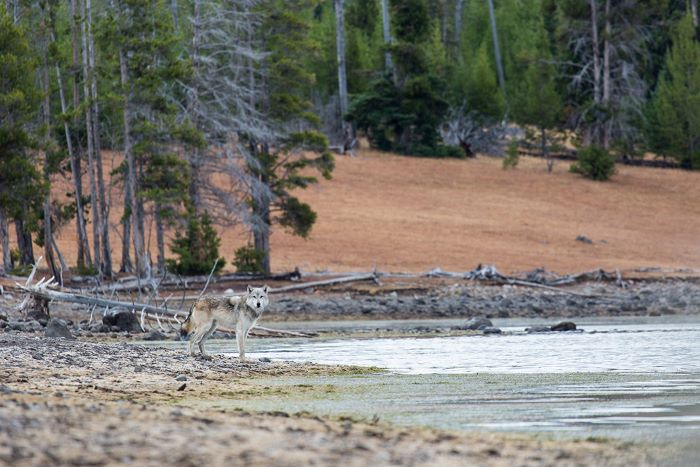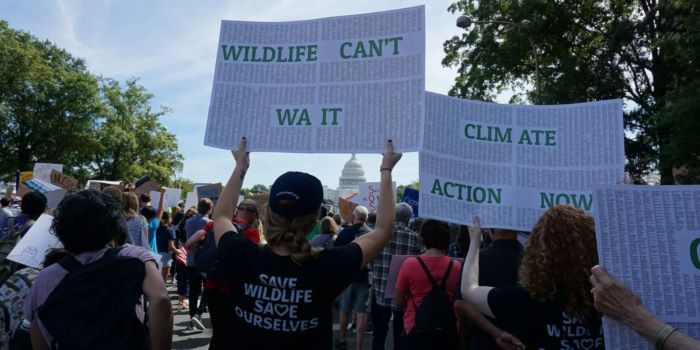It’s been seven months since the coronavirus hit the U.S. and forced us to start thinking about a “new normal.” We’ve recently passed a tragic benchmark; 200,00 Americans have died of the virus. Throughout this pandemic, we’ve seen the holes in our social systems laid bare and our traditional ways of doing things challenged. We are being forced to take an honest look at the world around us and our role in it— including the natural world.
What’s become glaringly clear is the deep connection between the health of wildlife, our environment and public health. The communities with the highest levels of air pollution in the United States are the ones suffering the most from the coronavirus. Deeply-embedded racial injustices in our country have led to a higher amount of industrial pollution in Black and Brown neighborhoods, and is attacking the health of these communities in ways we had not measured before. And in the past five years alone, American communities have suffered through multiple “100-year” climate disasters— exacerbating dangerous air quality, life-threatening flooding and displacement that takes a deep toll on mental and physical health.
On top of that, the mass extinction of animals and plants is happening faster than predicted, and people are the cause. A disturbing new report from the World Wildlife Fund shows we’ve lost nearly 70% of the world’s species in the last 50 years. Amidst everything else, this is a crisis we need to address urgently.

A gray wolf, an animal that may lose its Endangered Species Act protections, on the shore of Yellowstone Lake. Photo by: Neal Herbert/ NPS
This rapidly-accelerating extinction crisis and the loss of wildlife habitat is directly tied to human health. Scientists, disease ecologists and other experts warn that continued destruction of nature will result in more pandemics, such as the coronavirus. It’s proven that species exploited by humans have twice as many zoonotic viruses compared to those threatened for other reasons, and the close contact between these animals and people create situations ripe for the spread of disease. Scientists say when we capture wild animals from their natural homes, they undergo a great deal of stress and produce higher numbers of viruses. And a recent study showed that the risk of virus spillover— when viruses jump from animals to people— was highest when habitat destruction threatened wild animals.
But this trend does not have to continue. Indeed, it cannot. If we listen to science, and adopt the plan to protect 30% of lands by 2030, we can enjoy the benefits of more open spaces to boost our mental and physical health, protect imperiled animals and plants, ensure our natural system is in balance which keeps us healthy, and fight the life-threatening climate crisis. It’s simple: to protect ourselves, we must protect wildlife and our environment.
During quarantine, we were especially reminded that nature can heal us. People are social distancing and getting outside in record numbers. Wildlife sightings have lifted our spirits and helped us feel connected to the natural world. Going for a walk, growing a garden, hearing birds or simply sitting outside provide opportunities for people to reconnect with nature and replenish minds, bodies and spirits.
Yet nature can’t provide that much-needed balance if we don’t give it a chance. We must conserve wild habitat and nature, and change our behavior toward wildlife to be one of compassion and respect, rather than exploitation. In doing so, we can effectively address the climate crisis, help stop the extinction of the over one million animals at-risk, and value and protect human health in ways we have long neglected. Protecting wildlife must be a part of the equation when we address our environmental and public health problems.
The bold effort to save 30% of remaining lands and waters by 2030 (referred to as: 30 by 30) will help us achieve these goals. Right now, the United States has 12% of its waters and 12% of its lands protected. We need more protections to improve our environmental resilience.

Climate march in Washington, DC. Photo by: Stephanie Gagnon / National Wildlife Federation
Ensuring that lands and waters maintain their environmental integrity— by not drilling, fracking or mining there— will protect wildlife, the places they live, and the clean air, water and human health benefits that go along with it. When it comes to preventing wildlife-transmitted viruses, protecting habitat is especially key; losing healthy habitat drives wildlife into closer contact with people and greatly increases risk for human disease. The United Nations predicts that this will not only happen again, but also become a global trend over the next era if we fail to act.
Thankfully, the solutions already exist. Protecting one of our most successful environmental laws, the Endangered Species Act, prioritizing funding for conservation and championing 30 by 30 policies that protect parks, forests and rivers are all economical, proven solutions to halting the extinction and climate crises.
People, wildlife and nature are part of one interconnected system. To save what’s left of our natural world, we must leave our damaging “normal” behind. We need to heed the urgent message that nature is sending us, and respond now with profound changes in our policies, attitudes, behaviors and relationships to all species. Safeguarding at least 30% of lands and waters in this country by 2030 is a critical place to start. When it comes to nature, wildlife and our wellbeing, there is too much to lose. We can and must reverse the trend of extinction and restore a balance with our natural world that benefits wildlife and people alike.
